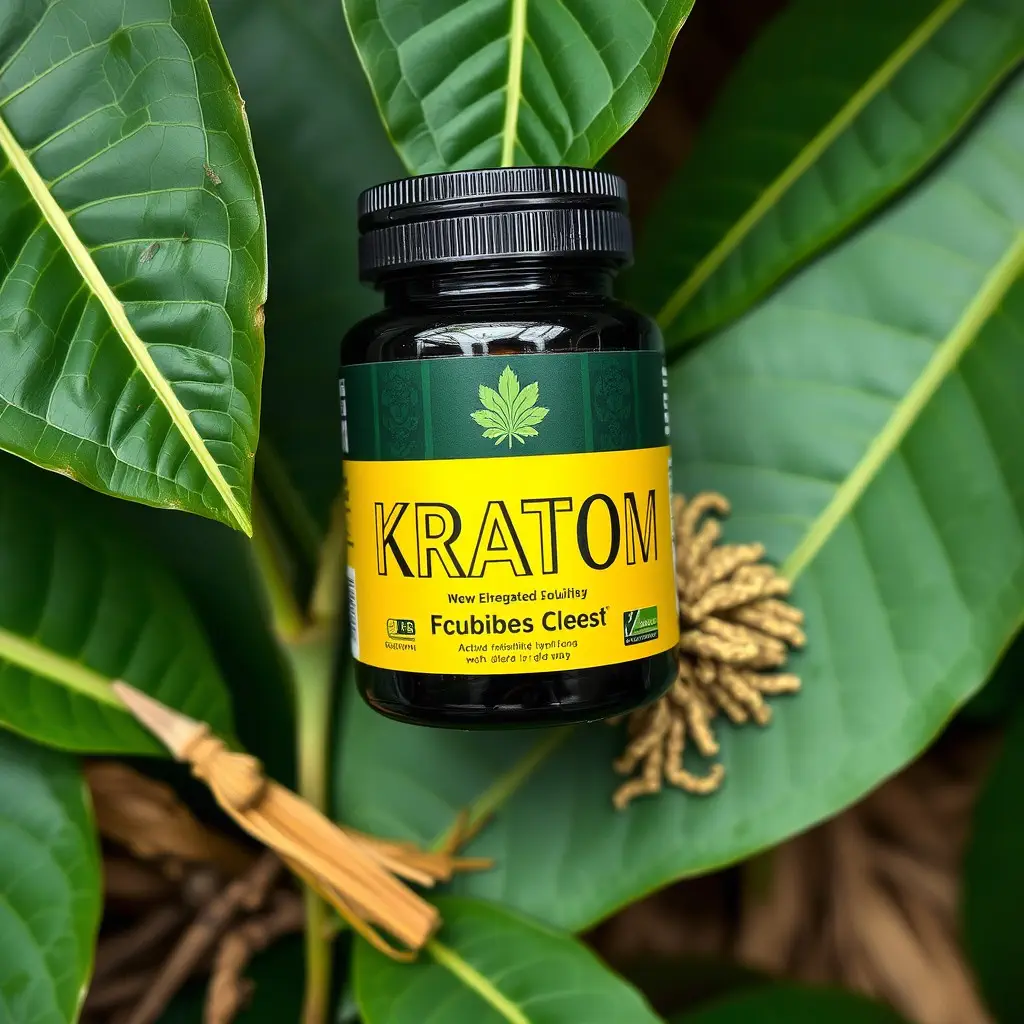Kratom, a natural herb from the Mitragyna speciosa plant, is gaining recognition in addiction treatment as 'kanna products'. Its primary compounds interact with opioid receptors, offering pain relief and euphoria without addictive properties. Research suggests kratom can aid in reducing cravings, managing withdrawal symptoms, and promoting well-being during recovery, though responses vary. Consulting healthcare professionals specializing in addiction medicine before considering kratom is essential. Kanna products offer a more holistic approach to treating addiction by balancing brain chemistry and supporting overall recovery.
Kratom, derived from the plant Mitragyna speciosa, has emerged as a potential ally in addiction treatment and recovery. With its growing recognition as an alternative to conventional methods, this natural substance is gaining traction for its unique properties. This article explores kratom’s role in managing withdrawal symptoms, particularly for opioid addiction, through scientific insights into its chemical composition and effects. We navigate the current landscape of addiction care, highlighting the need for innovative solutions like kratom. Additionally, we guide readers through the various forms, legality, and quality considerations of kratom products, including Kanna products, to ensure safe and effective use.
- Understanding Kratom and Its Potential in Addiction Treatment
- – What is Kratom? Its origins, species (e.g., Mitragyna speciosa), and chemical composition.
- – The current landscape of addiction treatment: limitations and the need for alternative approaches.
Understanding Kratom and Its Potential in Addiction Treatment
Kratom, a natural herb derived from the plant Mitragyna speciosa, has gained significant attention in the field of addiction treatment. Often referred to as ‘Kanna products’ in modern discussions, kratom’s unique chemical composition offers potential therapeutic benefits for individuals seeking recovery from substance use disorders. The primary active compounds in kratom, mitragynine and 7-hydroxymitragynine, interact with opioid receptors in the brain, providing pain relief and inducing feelings of euphoria or calmness, similar to opioids but without the addictive properties.
This characteristic makes kratom an intriguing alternative for those looking to break free from the cycle of addiction. Research suggests that kratom’s effects can aid in reducing cravings, managing withdrawal symptoms, and promoting overall well-being during the recovery process. As with any treatment approach, individual responses to kratom vary, and it is essential to consult healthcare professionals who specialize in addiction medicine before considering it as a therapeutic option.
– What is Kratom? Its origins, species (e.g., Mitragyna speciosa), and chemical composition.
Kratom is a natural substance derived from the leaves of the Mitragyna speciosa plant, commonly known as the kratom tree. Native to Southeast Asia, particularly Thailand and Malaysia, this tree has been used for centuries in traditional medicine practices. The species itself thrives in tropical environments and can grow up to 15 meters tall, bearing thick, leathery leaves that are the source of various kanna products.
Chemically, kratom contains a unique blend of alkaloids, with mitragynine being the most abundant and responsible for many of its effects. Other notable alkaloids include 7-hydroxy mitragynine, mitrapyridine, and mitragol, each contributing to the complex profile of this natural remedy. These chemical constituents interact with opioid receptors in the brain, accounting for kratom’s potential therapeutic benefits in managing withdrawal symptoms and supporting recovery from addiction.
– The current landscape of addiction treatment: limitations and the need for alternative approaches.
The current landscape of addiction treatment is marked by limitations. Despite significant advancements in medical science and therapeutic practices, traditional approaches often fall short in addressing the complex nature of addiction. Many existing treatments are prescribed on a one-size-fits-all model, neglecting individual differences and underlying causes. This approach can lead to high rates of relapse, emphasizing the need for innovative solutions.
In this context, Kanna products emerge as a promising alternative. These natural compounds, known for their potential therapeutic effects, offer a more holistic approach to addiction treatment. By focusing on balancing brain chemistry and promoting overall well-being, Kanna products aim to provide long-term support for recovery. This personalized approach holds the key to navigating the intricate path of healing, offering hope for those seeking effective and sustainable solutions beyond conventional methods.
Kratom, a natural herb with a rich history, offers a promising alternative for those seeking addiction treatment and recovery. Its unique chemical composition, particularly in species like Mitragyna speciosa, provides potential therapeutic benefits. As the current landscape of addiction treatment continues to evolve, exploring alternative solutions like kanna products becomes increasingly vital. By embracing innovative approaches, we can enhance support for individuals on their path to recovery.






